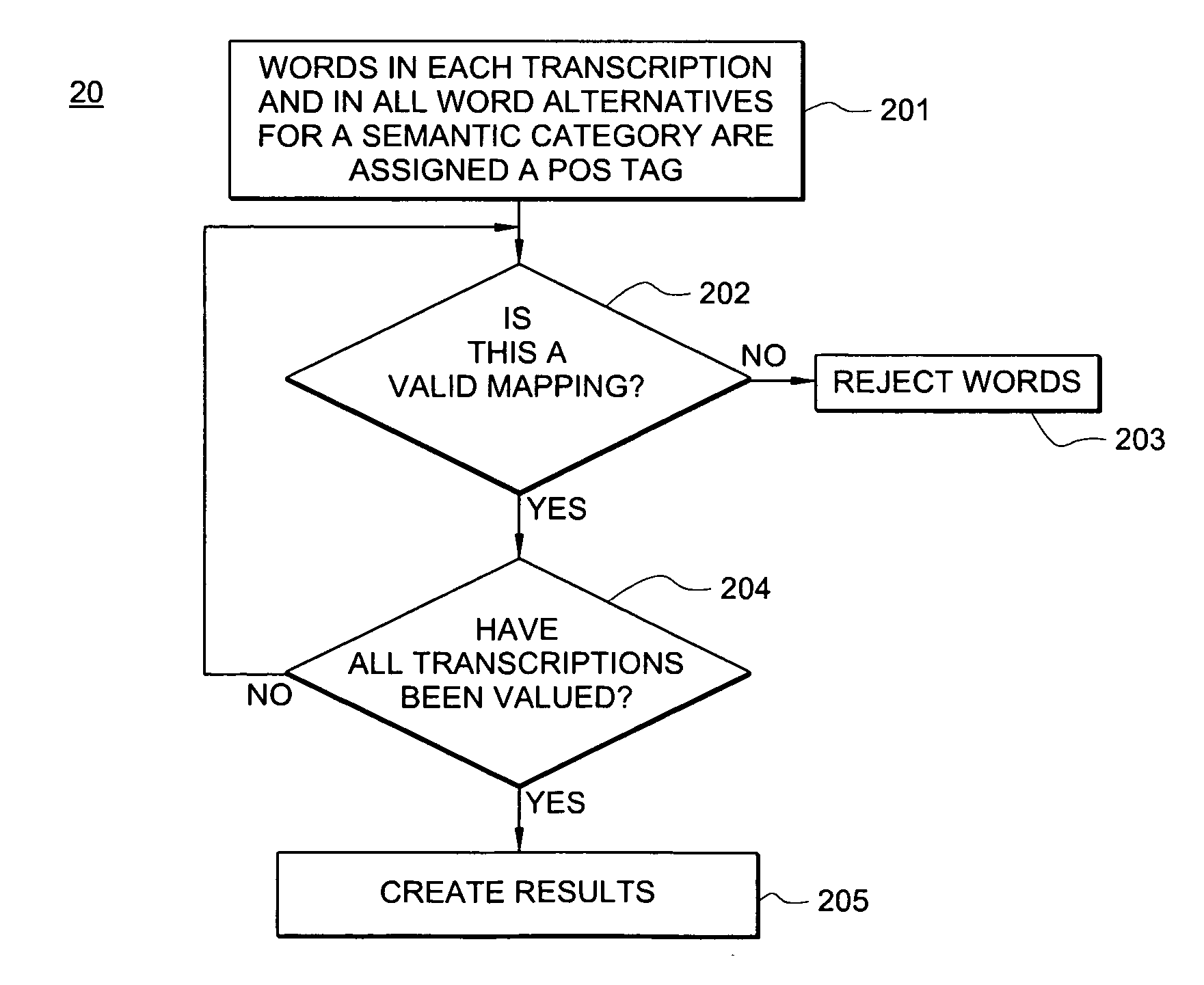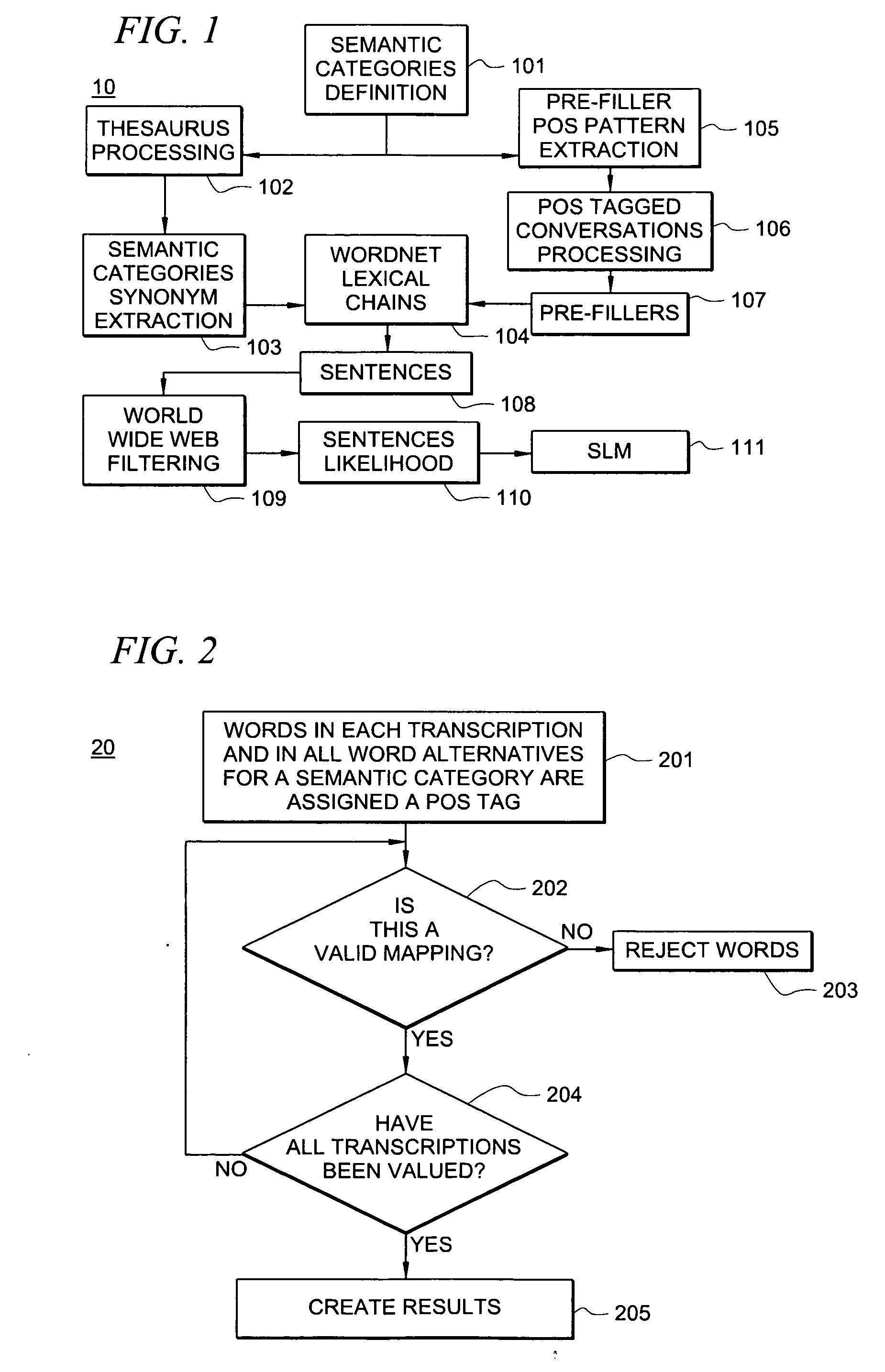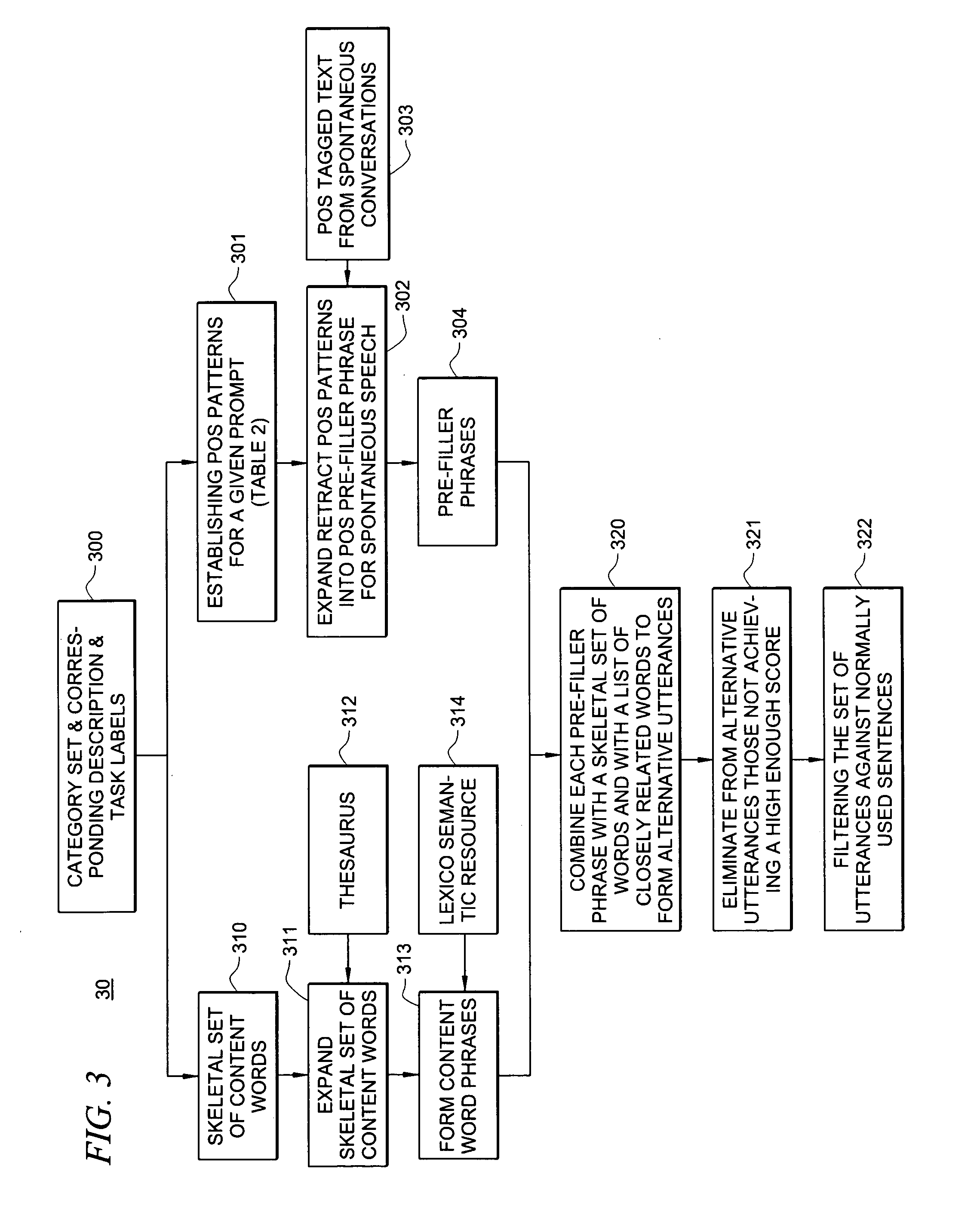Automatic generation of statistical language models for interactive voice response applications
a statistical language and voice response technology, applied in the field of automatic generation of statistical language models for interactive voice response, can solve the problems of unfavorable pre-definition of cfg, unfriendly dialog style, and difficult to ask open-ended questions
- Summary
- Abstract
- Description
- Claims
- Application Information
AI Technical Summary
Benefits of technology
Problems solved by technology
Method used
Image
Examples
Embodiment Construction
[0016]FIG. 1 shows one embodiment 10 of an organizational flow chart in accordance with the invention in which automatic SLM generation is achieved with minimum manual intervention and without any manually predefined set of domain-specific text corpora, user utterance collection or manually created CFGs for each IVR domain.
[0017]FIG. 4 shows one embodiment 40 in which IVR system 404 utilizes SLMs generated in accordance with the concepts discussed herein. The SLMs can be generated, for example, using PC 402 and stored in database 403 based upon the system operation discussed with respect to FIG. 1. PC 402 contains a processor, application programs for controlling the algorithms discussed herein, and memory. Note that the SLMs can be stored in internal memory and that memory can be available to a network, if desired. The SLM's are placed in Automatic Speech Recognizer (ASR) 405 for use by IVR system 404 to connect user utterances to a text message. IVR system 404 can be located physi...
PUM
 Login to View More
Login to View More Abstract
Description
Claims
Application Information
 Login to View More
Login to View More - R&D
- Intellectual Property
- Life Sciences
- Materials
- Tech Scout
- Unparalleled Data Quality
- Higher Quality Content
- 60% Fewer Hallucinations
Browse by: Latest US Patents, China's latest patents, Technical Efficacy Thesaurus, Application Domain, Technology Topic, Popular Technical Reports.
© 2025 PatSnap. All rights reserved.Legal|Privacy policy|Modern Slavery Act Transparency Statement|Sitemap|About US| Contact US: help@patsnap.com



